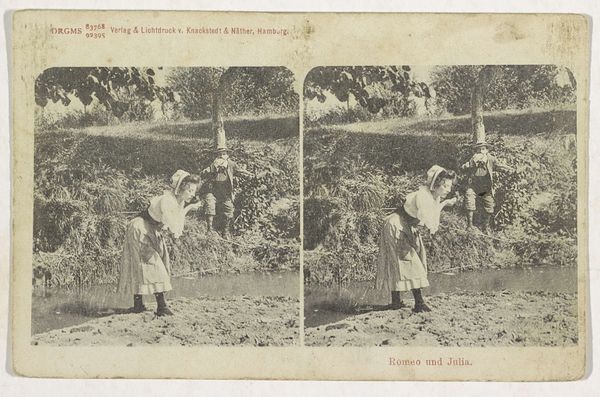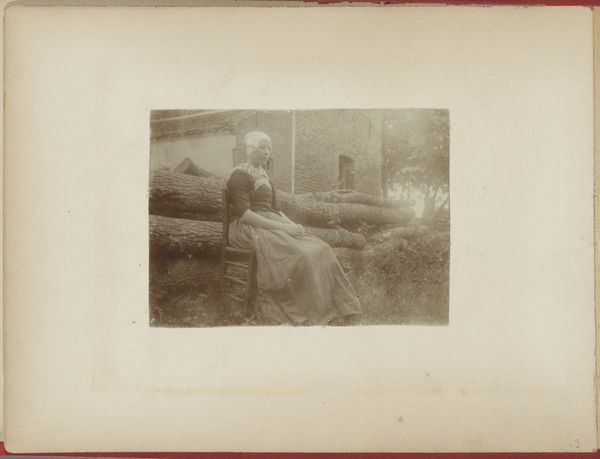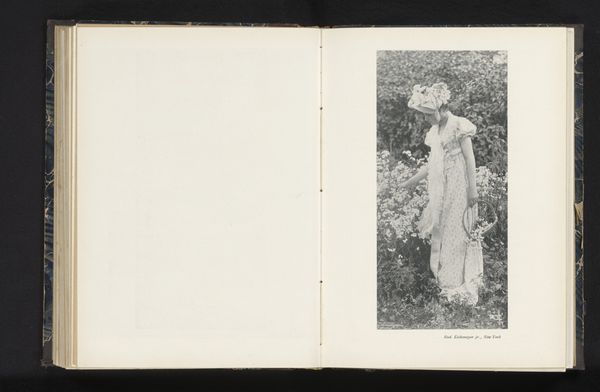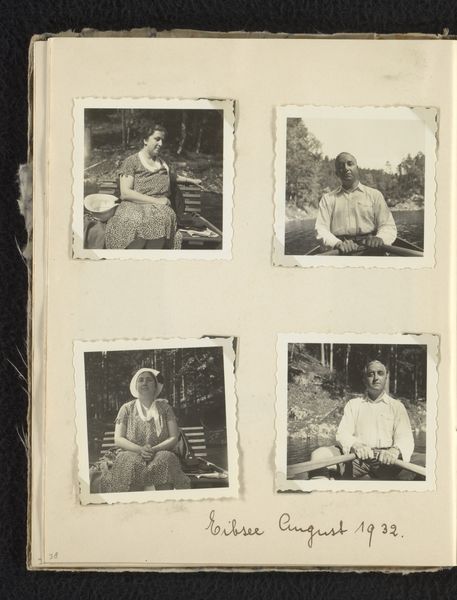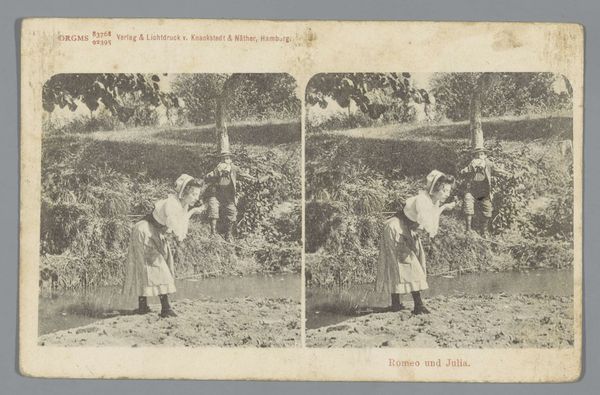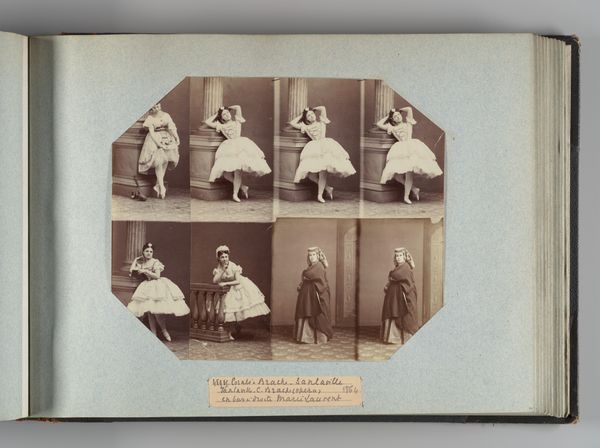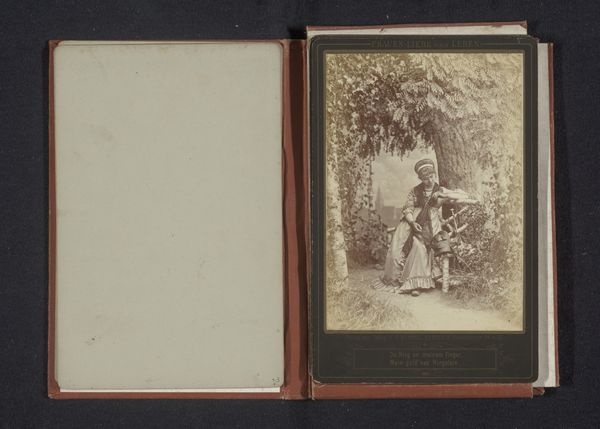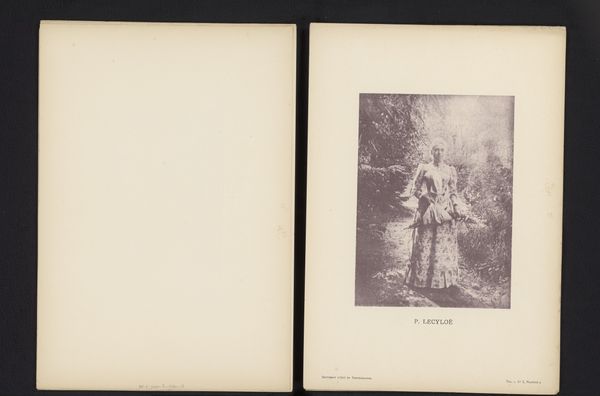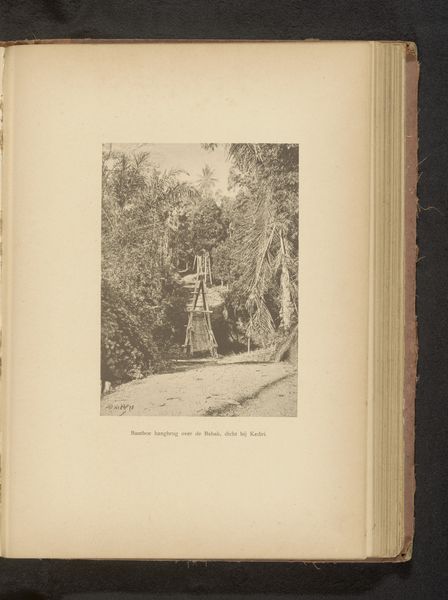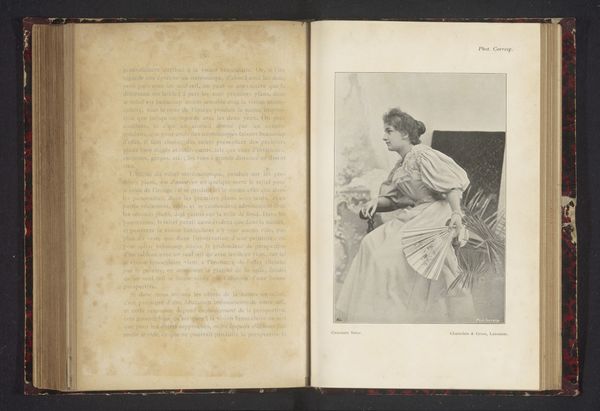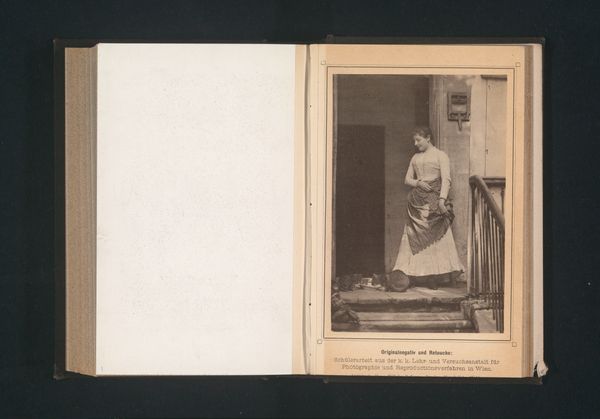
Dimensions: height 190 mm, width 270 mm
Copyright: Rijks Museum: Open Domain
Curator: This is "Drie vrouwen pratend met een man zittend op een boomstronk," which translates to "Three women talking to a man sitting on a tree stump". This albumen print by Henry Peach Robinson was created before 1885. I find the composition striking, like two scenes unfolding simultaneously. What are your initial thoughts? Editor: Well, my first impression is... pastoral melancholia. There's a quietness to the image, even though it depicts conversation. The separation of the two groups—the man with one woman on one side, and the other two women together on the other side, almost mirroring each other— creates this interesting visual and emotional distance. It feels staged. Curator: Staged is the right word, because Robinson created carefully constructed images with the use of combination printing and models! His goal was to elevate photography to the level of fine art by creating idyllic, romantic scenes inspired by paintings. What do you think that choice reflects about society back then? Editor: It says a lot, doesn't it? This conscious crafting reveals the values placed on idealized versions of life, especially rural life. The picturesque countryside, the presumably innocent interactions... It's all very curated to reflect Victorian notions of virtue, beauty, and class. It obscures the reality of rural poverty and inequality. I can’t help but wonder what stories we aren’t seeing. Curator: That's a fair point. The romanticism is a powerful filter, isn’t it? To me it feels both captivating and limiting. The detail in the landscape versus the subjects faces also feels worth noting to the photographs reception. Editor: Precisely. And in picturing rural subjects, the focus really feels much more on an idyllic experience that erases the subject’s actual personhood, not documenting who they actually were, a flattening that unfortunately occurs to this day with those facing inequalities. The use of black and white and soft focus gives the print this removed from time and space quality, where as color may situate the photograph to being ‘real’, black and white suggests nostalgia to something that never actually occurred, only the aspiration of something. Curator: I agree, and I think that tension between reality and ideal is where the image's lasting power lies. The romanticism and artificial staging create the very tensions you observed and bring into the light today. Editor: Absolutely. And those tensions, as uncomfortable as they may be, invite us to question not only the past but also our present-day aspirations and visual constructions. Curator: And that's why I keep coming back to images like these! There is a great deal to reflect upon through this lens of history. Editor: Well said. There is far more here than meets the eye at first. Thank you for sharing, and providing me with much to think about.
Comments
No comments
Be the first to comment and join the conversation on the ultimate creative platform.
